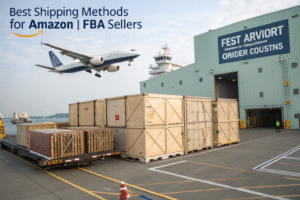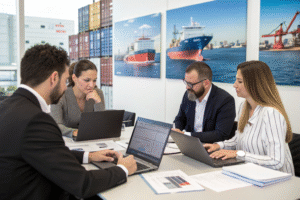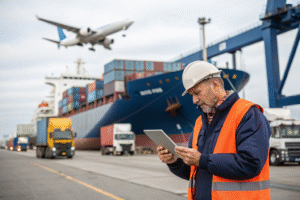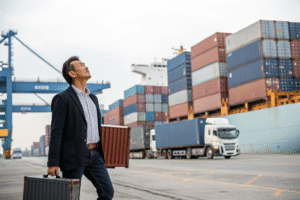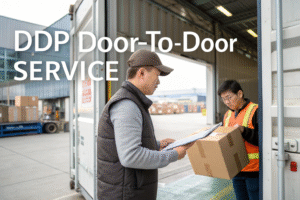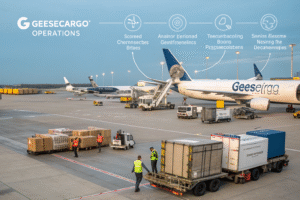Finding cost-effective freight solutions in Asia is no longer just a strategy—it’s a necessity. As tariff complexities and global trade tensions persist, smart logistics managers are increasingly searching for shipping routes that can help them avoid hefty customs duties. The key to winning in this game? Understanding which routes are truly “low-tariff” and why.
This article breaks down the most efficient low-tariff freight corridors from Taiwan, Korea, Thailand, and other rising Asian export hubs. You’ll discover which routes cut duty costs, improve delivery timelines, and support your profit margins—all while ensuring customs compliance and logistics security.
So if you're shipping clothing, accessories, electronics, or promotional goods from Asia to the US or Europe, keep reading. Whether you're a buyer like Ron in the U.S. or a procurement manager in Europe, this guide will show you the smarter lanes to take in today’s shipping landscape.
Which Asian Routes Offer the Lowest Tariffs?
Avoiding excessive tariffs is often a matter of knowing where to ship from—and how. Trade agreements, bonded zones, and free trade deals significantly influence duty rates. Many small and medium-sized importers overlook these savings.
Taiwan, South Korea, and Thailand are among the most favorable export hubs when it comes to low-tariff routes to the U.S. and Europe. These countries benefit from strong bilateral trade agreements and streamlined customs clearance when paired with efficient freight forwarding partners.

Why Do Routes from Taiwan and Korea Attract Lower Duties?
The U.S. has signed Free Trade Agreements (FTAs) with both South Korea and Taiwan, allowing for reduced or zero tariffs on a wide range of goods. For example, under the U.S.-Korea Free Trade Agreement, nearly 95% of goods can enter duty-free. Similarly, Taiwan enjoys reduced tariffs on industrial and textile goods under the Trade and Investment Framework Agreement.
Combine this with well-developed infrastructure at ports like Busan and Kaohsiung, and you get both cost efficiency and speed. These ports have excellent vessel availability and direct lines to Long Beach, LA, and major EU hubs.
Are Thai Exports Also Favorable for Low-Tariff Logistics?
Yes, Thailand's participation in ASEAN trade frameworks and its Generalized System of Preferences (GSP) eligibility make it an underrated low-tariff shipping source. Many fashion accessories, leather goods, and small electronics qualify for duty reductions when the right documentation is filed by your freight forwarder.
Ports like Laem Chabang and Bangkok Port offer a high-frequency schedule of sailings, especially toward the US West Coast and Northern Europe. Combined with DDP shipping, it creates a high-control and cost-transparent model.
How Do DDP Services Help Reduce Tariff-Related Risks?
Shipping under DDP (Delivered Duty Paid) terms is becoming a game-changer for companies trying to reduce risks and unexpected tariff fees. With the right partner, this service ensures full control over customs processing and final delivery.
DDP helps you avoid surprise charges by clearly defining tariff costs upfront, with your freight forwarder handling all customs clearance, taxes, and delivery logistics.

What Makes DDP Ideal for High-Volume Shipping?
When you're moving hundreds or thousands of units, even small miscalculations on tariffs can eat into your margins. DDP shipping eliminates guesswork. Partnering with a freight forwarder like GeeseCargo means that your goods can clear customs in the U.S. or EU without your team getting involved in the paperwork.
Companies such as Alibaba buyers and Amazon sellers prefer DDP because it aligns perfectly with warehouse models and tight delivery schedules.
Can DDP Combine With Low-Tariff Origins for More Savings?
Yes. If you're shipping from Korea, Taiwan, or Thailand and using DDP, you can leverage bilateral FTAs while keeping costs predictable. GeeseCargo ensures HS code pre-checks, GSP declarations, and even C/O documentation to guarantee eligibility.
This combination of low origin tariffs and all-inclusive DDP execution gives importers confidence in both their logistics timeline and budget.
What Role Do Bonded Zones Play in Duty Reduction?
Bonded zones allow goods to enter and remain in a customs-controlled area without paying duties immediately. This is a major advantage for brands and distributors who manage multiple international shipments.
Using bonded warehouses and free trade zones in Asia offers greater flexibility in duty timing, sometimes eliminating tariffs entirely when re-exported.

Where Are the Most Strategic Bonded Zones in Asia?
Some of the best zones are in:
- Incheon Port Free Economic Zone (South Korea)
- Laem Chabang Free Trade Zone (Thailand)
- Taoyuan Air Cargo Park (Taiwan)
These bonded areas allow us to temporarily store, sort, and consolidate goods before declaring them for export or final destination. According to the World Free Zones Organization, these zones offer customs processing times 35% faster on average.
How Can Freight Forwarders Manage Bonded Zone Compliance?
This is where experience matters. At GeeseCargo, we manage the entire bonded process—from in-zone unloading to pre-export declaration. We issue secure barcodes, track HS code allocation, and ensure correct harmonization. WCO compliance standards are followed to the letter.
By aligning with bonded storage near major ports, we give our clients the option to delay duties or avoid them altogether through re-exports.
Which U.S. & EU Ports Receive These Low-Tariff Shipments?
Ultimately, even the smartest Asian export route needs an equally efficient destination port. Certain U.S. and EU terminals have better infrastructure, faster customs clearance, and easier inland distribution systems.
Top-tier ports like Long Beach, Rotterdam, and Hamburg are well-equipped to handle low-tariff origin shipments, especially when paired with accurate customs documentation.

Why Is Long Beach Preferred for Asia-U.S. Routes?
Located in California, Port of Long Beach offers daily sailings and 24/7 customs processing. It is the number one choice for goods from East and Southeast Asia, especially when those goods qualify for reduced tariffs under FTA programs.
According to Port of Long Beach reports, over 70% of apparel, electronics, and accessories arriving from Taiwan and Korea clear customs here within 36 hours.
What Makes Rotterdam and Hamburg Strategic EU Hubs?
In the European Union, Port of Rotterdam (Netherlands) and Hamburg (Germany) lead in digital customs, bonded warehousing, and freight rail connectivity. When we handle DDP shipments via these ports, we often reduce customs hold times by over 50%.
Both ports are partners in the EU Single Window environment, meaning faster, harmonized clearance from Asian exporters using valid HS codes and correct certificates.
Conclusion
Shipping from Asia doesn’t have to mean high tariffs and hidden fees. If you leverage low-tariff routes from countries like Taiwan, Korea, and Thailand—especially using bonded zones and DDP services—you can protect your bottom line and scale your import business with confidence.
If you're an American or European buyer tired of unpredictable freight costs, or just want smoother customs experiences, our GeeseCargo team can help. We’ve spent years building relationships with port officials and customs agents in Asia, Europe, and the U.S. For personalized shipping plans or pricing, contact Ben Zhu at benzhu@geesecargo.com and let's streamline your logistics together.

